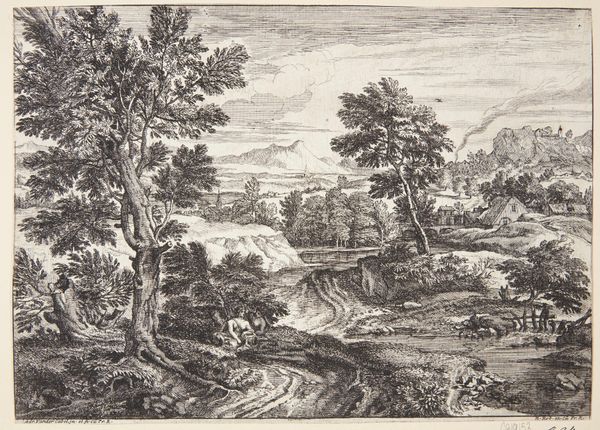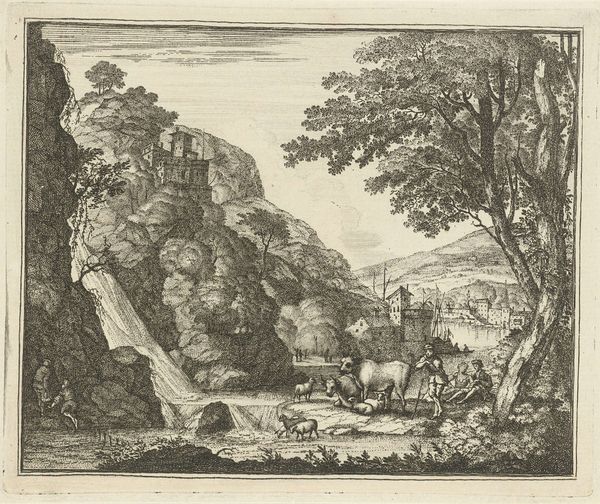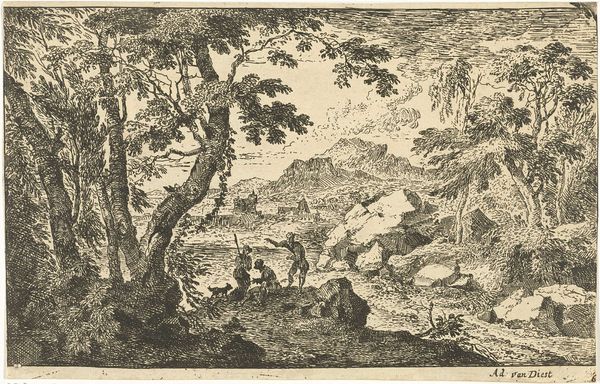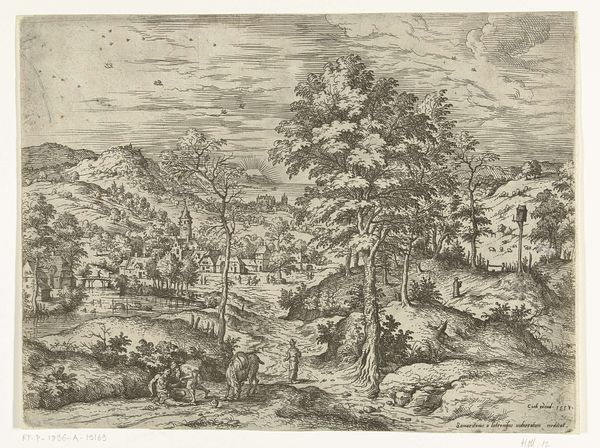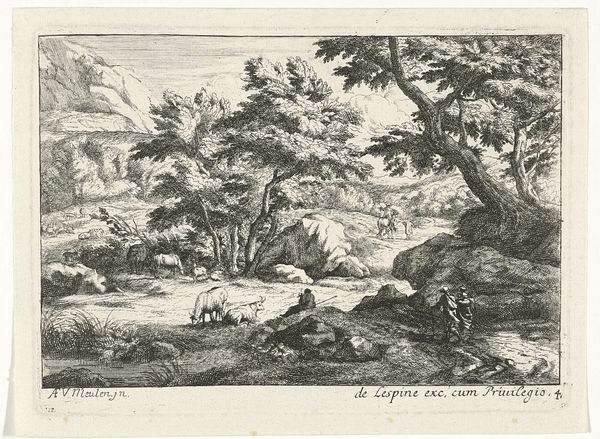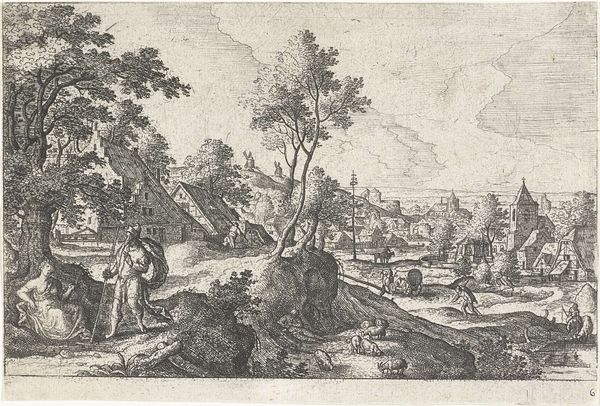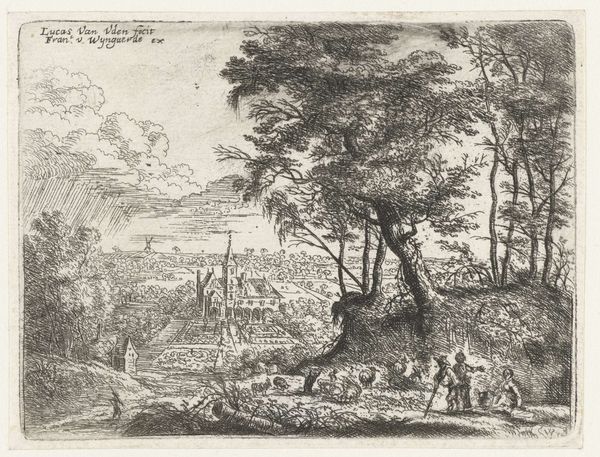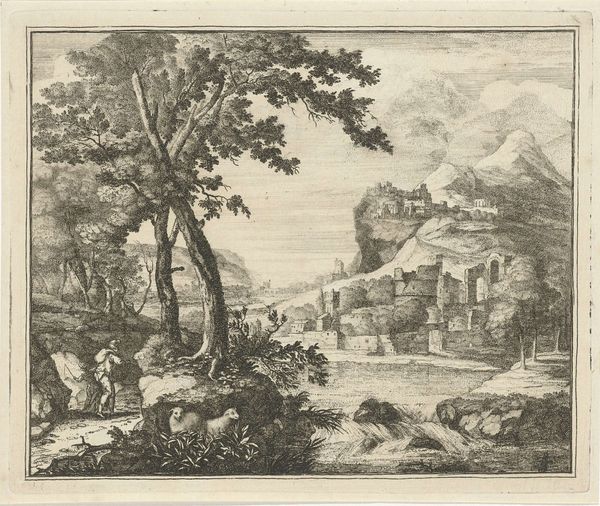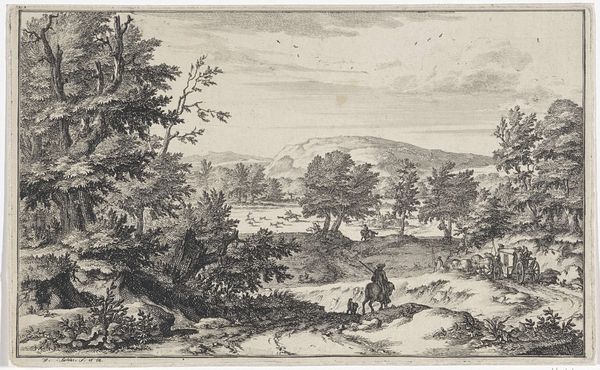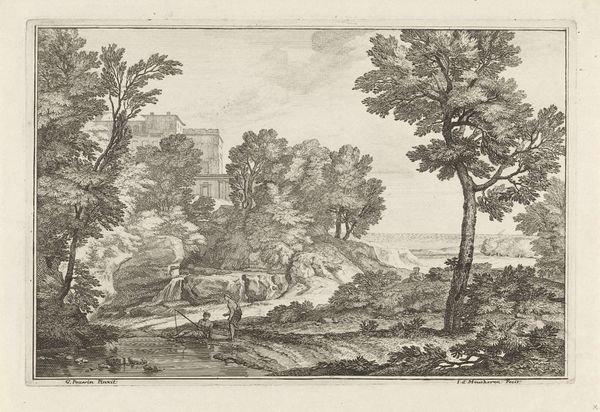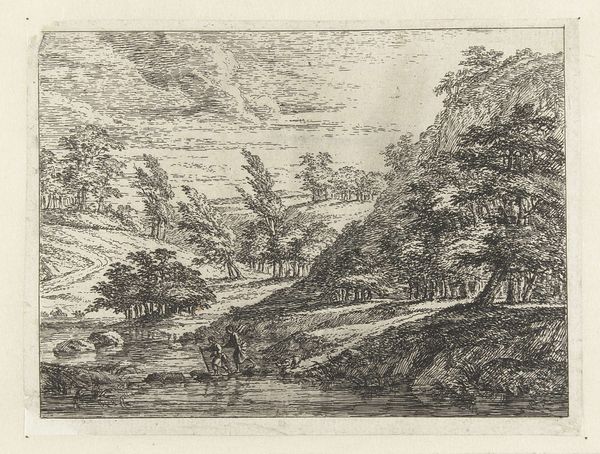
drawing, print, etching, engraving
#
drawing
#
baroque
# print
#
etching
#
landscape
#
engraving
Dimensions: height 124 mm, width 175 mm
Copyright: Rijks Museum: Open Domain
Curator: So here we have "Landscape with cattle and figures", created sometime between 1674 and 1733. It's attributed to Jan van Huchtenburg and made using etching, engraving, and drawing. Look at how detailed it is, rendered in print! What are your initial thoughts? Editor: It’s intensely idyllic. A fantasy landscape, really, isn't it? Everyone just... existing, side by side. Makes you think of overloaded pastoral clichés, the kind tapestries are made of. What I do find interesting is the method, this etching. A readily available method to distribute these fantasies to the masses. Curator: Precisely! Consider the social context: Etching, engraving—these were means of disseminating images, ideas. Van Huchtenburg’s scenes of leisure, the gentle slopes, the livestock are meant for more than a rich noble’s wall; they reach parlors and studies of merchants too. The material itself allows for replication on an accessible scale. Editor: Yes, it is like the landscape itself is being manufactured. Look how uniform the line-making is. It doesn't have any individual character, does it? You could teach a team to assemble this scene, divide the labour. A bit of pastoral pastiche for everyone. I wonder what those cattle thought about it. Curator: Perhaps their labor funded it all, the very leisure of these scenes! This piece echoes broader socio-economic tensions: the shift toward urbanism, and that wistful backward glance towards a 'simpler' rural life which only existed in paintings anyway. The very materials—ink, paper, the press—speak of a world in flux. Editor: A cynical observation for such a pleasant scene, don't you think? Maybe its the quality of replication and its industrial reach of imagery like this I’m fascinated with. Curator: Well, isn't all art a commentary? Whether of production, nature or emotionality? Let's say it is like Van Huchtenburg opened a small window to 17th century’s aspirations—and anxieties about change, rendered in print. Editor: Quite right. Maybe the most truthful aspect of the work then, is the materiality used to create this image.
Comments
No comments
Be the first to comment and join the conversation on the ultimate creative platform.


